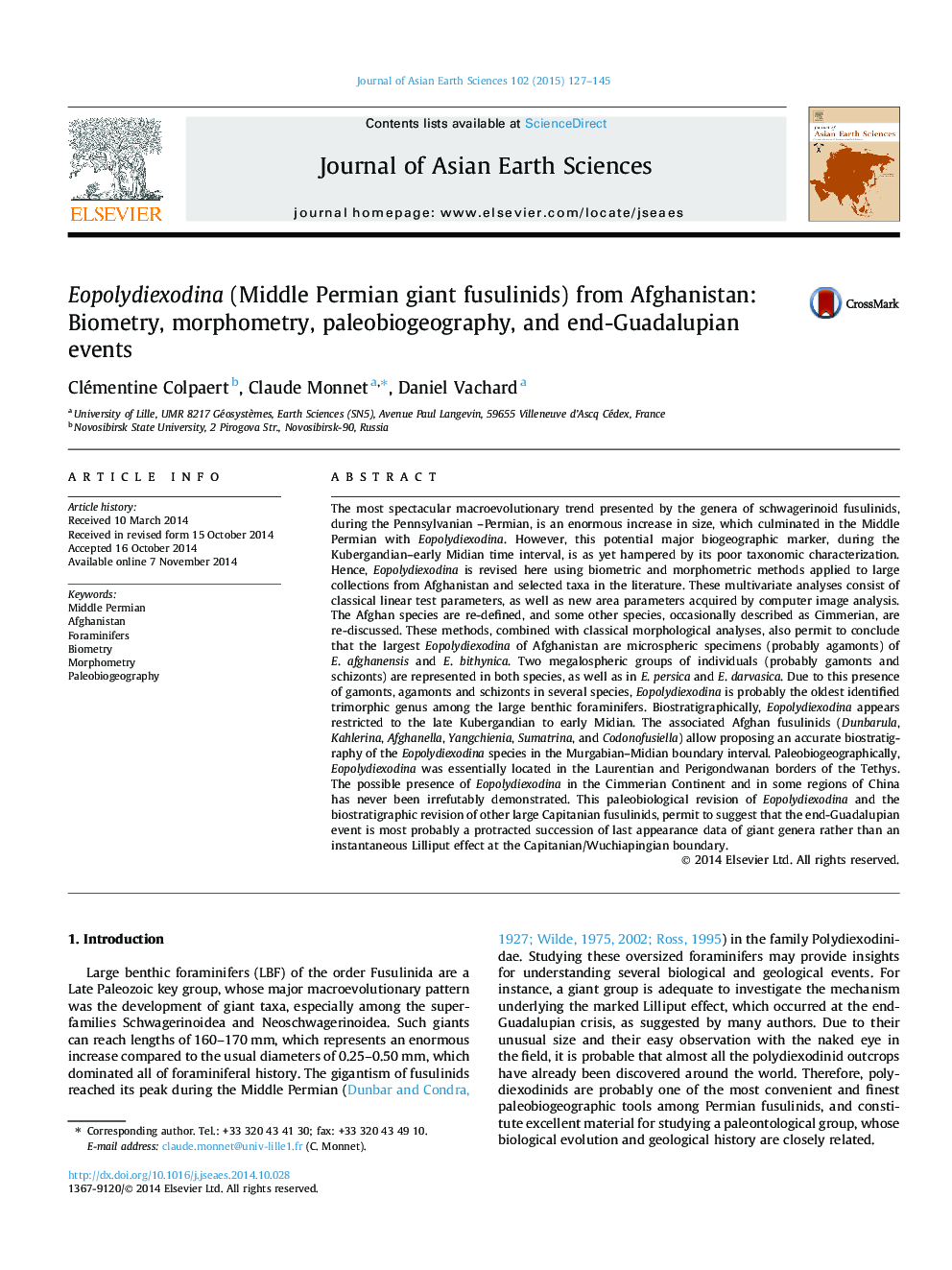| کد مقاله | کد نشریه | سال انتشار | مقاله انگلیسی | نسخه تمام متن |
|---|---|---|---|---|
| 4730414 | 1640367 | 2015 | 19 صفحه PDF | دانلود رایگان |

• The Middle Permian giant fusulinid Eopolydiexodina from Afghanistan is revised.
• Biometric results permit a better characterization of its species and/or generations.
• The biostratigraphy of Murgabian–Midian Eopolydiexodina is reviewed.
• Eopolydiexodina is a good biogeographic index of Tethyan margins but is not Cimmerian.
• The end-Guadalupian extinction was protracted and not sudden.
The most spectacular macroevolutionary trend presented by the genera of schwagerinoid fusulinids, during the Pennsylvanian –Permian, is an enormous increase in size, which culminated in the Middle Permian with Eopolydiexodina. However, this potential major biogeographic marker, during the Kubergandian–early Midian time interval, is as yet hampered by its poor taxonomic characterization. Hence, Eopolydiexodina is revised here using biometric and morphometric methods applied to large collections from Afghanistan and selected taxa in the literature. These multivariate analyses consist of classical linear test parameters, as well as new area parameters acquired by computer image analysis. The Afghan species are re-defined, and some other species, occasionally described as Cimmerian, are re-discussed. These methods, combined with classical morphological analyses, also permit to conclude that the largest Eopolydiexodina of Afghanistan are microspheric specimens (probably agamonts) of E. afghanensis and E. bithynica. Two megalospheric groups of individuals (probably gamonts and schizonts) are represented in both species, as well as in E. persica and E. darvasica. Due to this presence of gamonts, agamonts and schizonts in several species, Eopolydiexodina is probably the oldest identified trimorphic genus among the large benthic foraminifers. Biostratigraphically, Eopolydiexodina appears restricted to the late Kubergandian to early Midian. The associated Afghan fusulinids (Dunbarula, Kahlerina, Afghanella, Yangchienia, Sumatrina, and Codonofusiella) allow proposing an accurate biostratigraphy of the Eopolydiexodina species in the Murgabian–Midian boundary interval. Paleobiogeographically, Eopolydiexodina was essentially located in the Laurentian and Perigondwanan borders of the Tethys. The possible presence of Eopolydiexodina in the Cimmerian Continent and in some regions of China has never been irrefutably demonstrated. This paleobiological revision of Eopolydiexodina and the biostratigraphic revision of other large Capitanian fusulinids, permit to suggest that the end-Guadalupian event is most probably a protracted succession of last appearance data of giant genera rather than an instantaneous Lilliput effect at the Capitanian/Wuchiapingian boundary.
Journal: Journal of Asian Earth Sciences - Volume 102, 15 April 2015, Pages 127–145